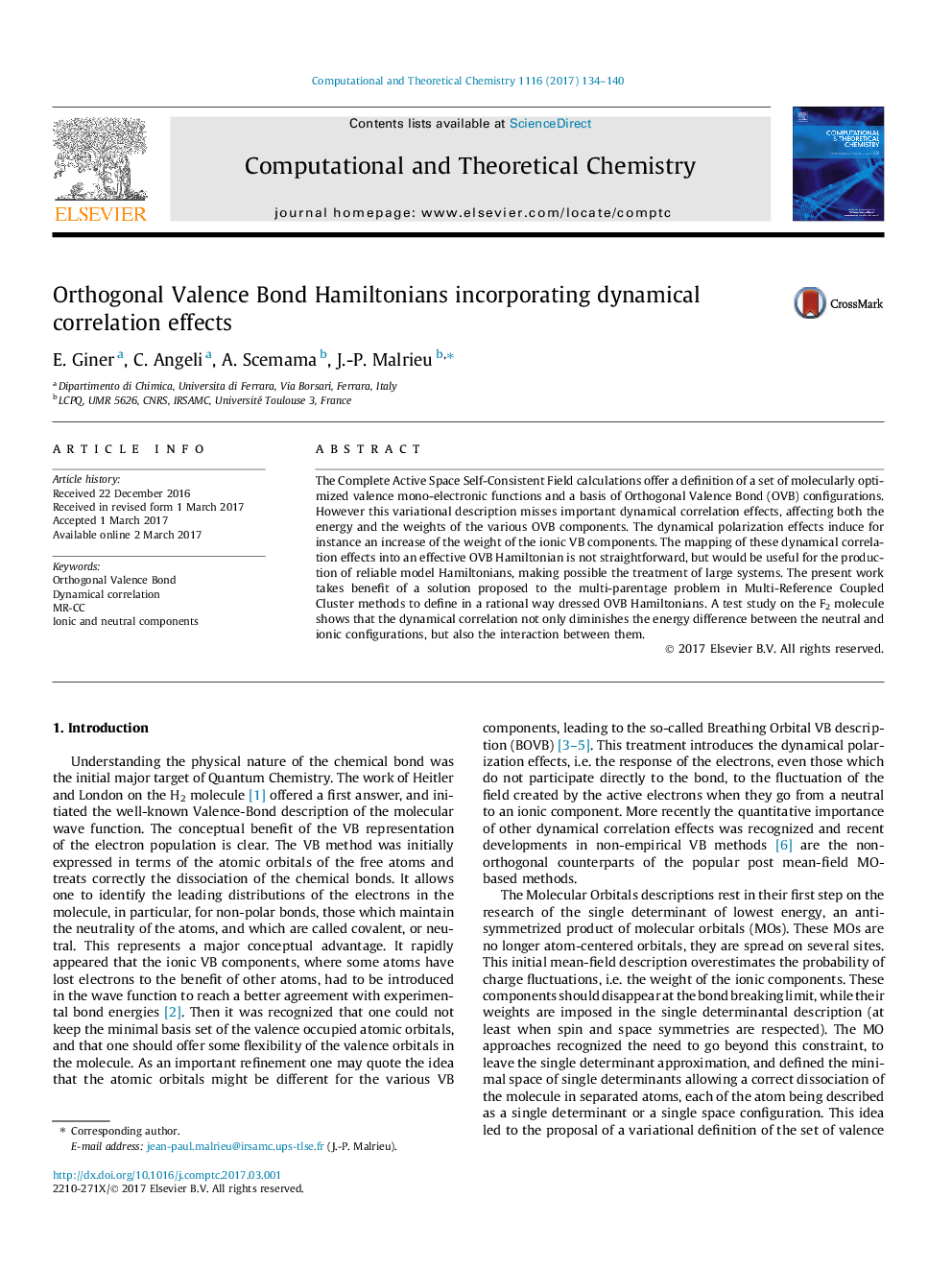| Article ID | Journal | Published Year | Pages | File Type |
|---|---|---|---|---|
| 5392229 | Computational and Theoretical Chemistry | 2017 | 7 Pages |
â¢The CASSCF function can be read as spanning an Orthogonal Valence Bond basis.â¢The dynamical correlation changes the Neutral/Ionic components ratio.â¢Solving the MR-CC multi-parentage problem offers a definition of an effective valence Hamiltonian.â¢The main dynamical correlation effect concerns the energy difference between neutral and ionic VB components.
The Complete Active Space Self-Consistent Field calculations offer a definition of a set of molecularly optimized valence mono-electronic functions and a basis of Orthogonal Valence Bond (OVB) configurations. However this variational description misses important dynamical correlation effects, affecting both the energy and the weights of the various OVB components. The dynamical polarization effects induce for instance an increase of the weight of the ionic VB components. The mapping of these dynamical correlation effects into an effective OVB Hamiltonian is not straightforward, but would be useful for the production of reliable model Hamiltonians, making possible the treatment of large systems. The present work takes benefit of a solution proposed to the multi-parentage problem in Multi-Reference Coupled Cluster methods to define in a rational way dressed OVB Hamiltonians. A test study on the F2 molecule shows that the dynamical correlation not only diminishes the energy difference between the neutral and ionic configurations, but also the interaction between them.
Graphical abstractDownload high-res image (92KB)Download full-size image
